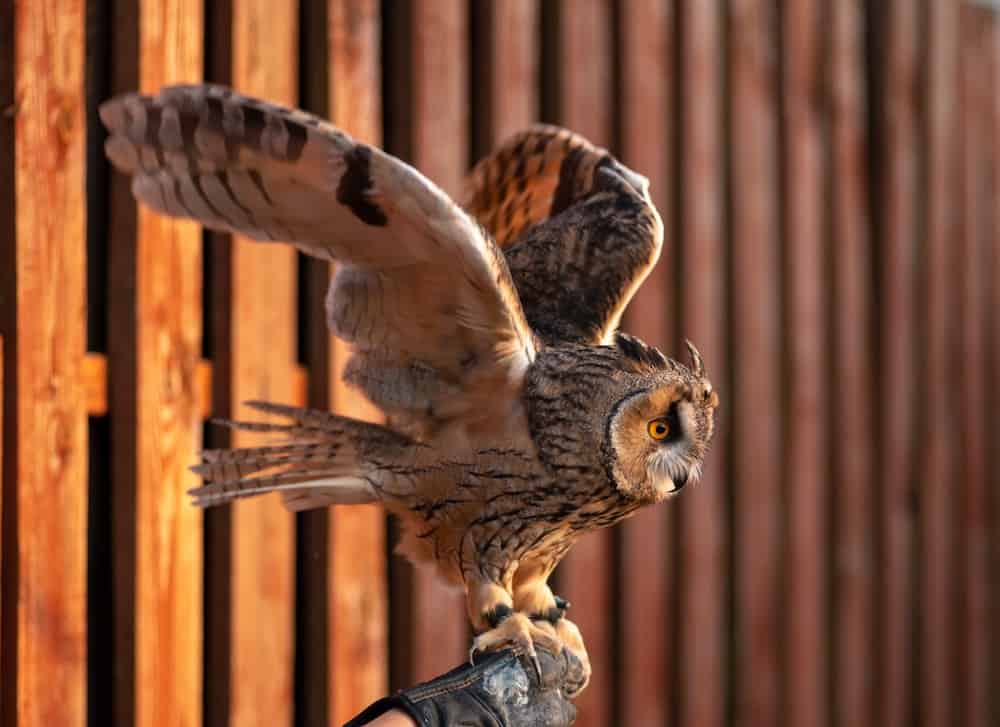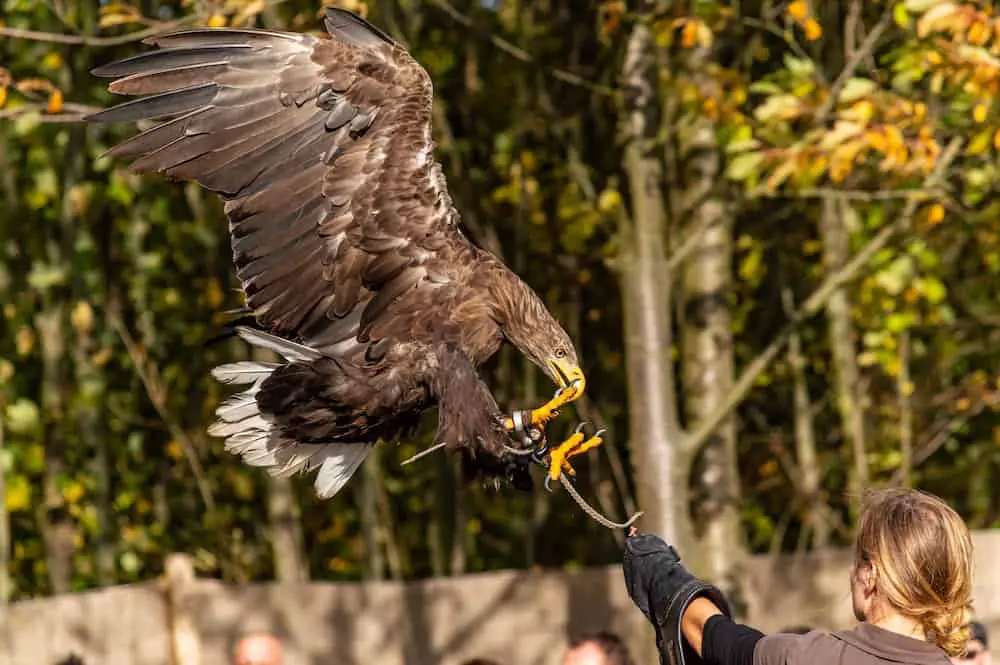Falconry is an old hunting method and modern sport that individuals have practiced for centuries. But are these majestic birds of prey exploited for their skills? And is it cruel to subject them to this training and form of sport?
Falconry is generally not considered cruel. Anyone interested in starting falconry must complete a two-year apprenticeship first and receive a license to ensure they know how to treat and take care of the birds properly. Most falconers have great respect for their hunting partners.
Let’s look at what falconry is, and how this process works while learning how falconry can be safe and healthy for both the bird and its owner.
Is Falconry a Cruel Sport?
When falconry is done right, it is not cruel. Most people who participate in this will take excellent care of their birds and eventually release them back into the wild. The birds are not abused or misused. But this doesn’t mean that falconry is always practiced ethically.
When a falconer does not take care of the bird or does not follow the proper rules, it may cause harm to the bird.
Here are some instances where falconry can become cruel, especially when practiced illegally.
Why Is Falconry Ethical?
Did you know that humans have been practicing falconry and working with raptors for over 4000 years?
Between caring for the birds and hunting together – we’ve developed an exceptional relationship with these apex predators.
There are several steps in falconry to ensure the birds are kept safe and healthy. We’re going to look at the main ones here.Falconry Licensing Stops Animal Abuse
It will be a relief for those worried about animal cruelty to know that the United States has strict licensing requirements for any falconer.
Falconers must get a federal and a state license through the Game and Fish Department in their state before beginning.
The objective of these extensive qualification steps – from the licensing to apprenticeship – is to ensure the falconer is prepared for the responsibility to come.
These steps also help reduce the chances of any cruelty towards the birds and make the sport safe.
People can choose from three types of licenses:
Those who get the master or general licenses can choose from more birds of prey and may be allowed to have more than one bird at a time, as long as they meet all required regulations.
It takes time to move up in licenses so the falconer can learn more about the sport rather than rushing in.
You need to take a written test to get the beginner's permit. The falconer will need to get at least 80% on the test to pass. Several resources help with this, but they must get a beginner’s license before starting the apprenticeship.
Proper Housing Is Provided to the Falcons
Falcons are expensive to care for and house properly, so falconers must be financially committed to providing a suitable living environment for their falcons before they even begin training.
The housing facilities used in this are often called mews and are similar in size to a large tool shed. However, the size of the mews needs to fit the bird.
Falconers must be careful not to place the bird in a small home as it would be cruel to their feathered friends.
There are a few things that the mews needs to have:
These mews are regulated through various falconry laws and may have additional local requirements to help keep the birds safe.
Birds are not allowed to live in small cages as per these regulations.
Many often have their own little homes with plenty of room to spread out and roam within.
Falconry Apprenticeships Teaches You How to Care for the Birds
When someone wants to start as a falconer, they must go through an apprenticeship to learn how to care for the birds and keep them safe.
In most places, new falconers must find someone to sponsor them. There are two options here:
Most of the time they will start with a trained raptor under the age of one, called a passage. The falconry apprenticeship takes two years to complete.
During this time, they gain experience in the falconry process and make sure the bird is well-taken care of – preventing any cruelty along the way.
Some of the things the apprentices learn or gain during this time include:
This apprenticeship may sound long, but it makes sure that anyone who chooses to do it learns all the skills they need and can help keep the bird safe.
When someone completes their apprenticeship and receives a falconry license, they can branch out independently.
The Birds Remain Protected and in Good Medical Care
Not only are these wild animals protected, but they’re also considered athletes in their own right. So people go above and beyond to ensure they have everything they need to thrive, this includes:
The Birds Are Released Back to the Wild Afterwards
Many raptors are released back into the wild after training and hunting for a year or two.
There’s often much careful consideration that goes into whether a bird should be released or kept in captivity after its hunting days are behind it.
If they’ve imprinted on a person - they’re unsuitable for release.
But captive-bred raptors raised through the “hacking” process – can be released.
“Hacking” works by placing broods in artificial nests after they have learned to hunt and regulate their body temperatures, where they can feed without imprinting on humans.
Because these birds are allowed to hunt their prey and improve their survival skills, they are often stronger once released and do better than their untrained counterparts.
Falconry Controversies
Here are a couple of controversies flying around about falconry and where the truth lies in each one.
Falcon Hoods Are Cruel
No, this is not true. Falcon hoods are not cruel. They’re an essential accessory that all raptors need for falconry.
In a raptor’s mind – what they can’t see doesn’t exist. So hoods are ideal for calming the birds down and preventing them from getting stressed in a potentially frightening situation.
Falconers commonly use hoods for young birds that are starting their training.
In trained raptors, falconers use hoods to stop the birds from setting their eyes on prey they don’t want to them chase.
When the falconer takes the hood off, they are ready to release the prey they want the raptor to chase. This technique helps narrow the birds’ focus on the target and increases their success rate.
Experienced falcons will even begin to get excited when their hoods come out because it means that it’s time to hunt.
Falconry Tethers Are Cruel
Tethers are not cruel as long as they are used at the correct times for safety reasons.
Falconers use tethers when the birds are away from their aviaries or in transit. It’s a form of safety – much like using a leash when taking your dog for a walk.
Note the birds don’t move very much unless they are hunting. They sit pretty still for lengthy periods, building up their energy to use when it matters.
So tethering the birds in these moments is hardly a challenge, but it’s crucial if something happens.
Falcons Live Longer in the Wild
Many animals do better in the wild than in captivity, but birds of prey are not on this list.
Falcons and all other birds used for falconry live much longer in captivity as long as they are treated humanely.
The wild can be very cruel to raptors – most peregrine falcons don’t survive their first year in the wild, and those who survive live to about 13 in the wild.
Their captive counterparts live to an average of 20 years old, but are known even to get up to 30.
Their long lives are attributed to the birds’ guaranteed good food, exercise, and environment conducive to flourishing.
Only Falcons Are Used in Falconry
Despite the name, falcons are only one type of bird used in falconry. Many other birds of prey do well in this role too.
Falconers can choose the type of bird they would like to train and use in falconry, some common choices include:When choosing the right bird for falconry, the falconer needs to consider how much time is necessary to train the bird and how much space is available for it to stretch out and fly.
Larger birds will need more room to fly around, so, typically, only experience falconers will take them on.
Final Note
It is normal to worry about whether falconry is cruel to the birds or not, especially if you have seen someone treat a bird unkindly or even use inhumane practices.
But it is important to remember that falconry is not cruel when done correctly.
If the bird is taken care of, appropriately trained, and given the right home – captivity is perfectly safe and even more conducive for survival than the wild.
Equipment like leather hoods and tethers are also necessary if used for the right reasons. They assist in the training, transportation, and safety of the birds.
If you’re concerned that a bird may be treated inhumanely, it’s essential to report them to your local authorities. Keeping particular raptors like falcons as domestic pets is against the law in countries like the US.
Otherwise, this sport is something falconers invest ample time and money into through certifications and apprenticeships. So people qualified to handle these birds are highly capable of providing them with good lives.
And if the conditions are correct, the birds can successfully be reintroduced to the wild after one or two years of falconry.


